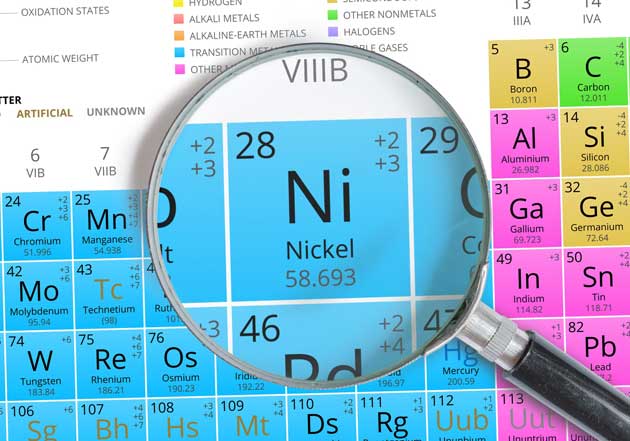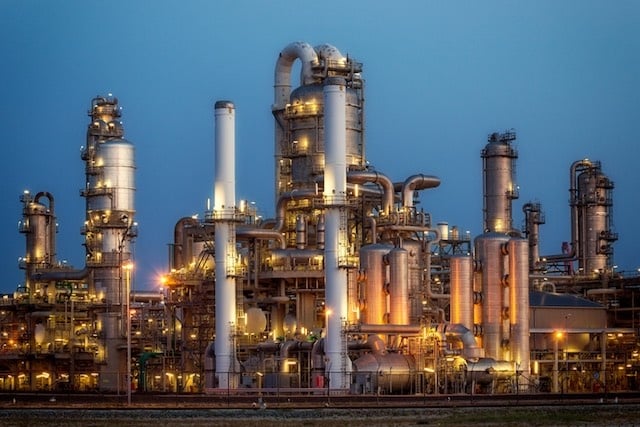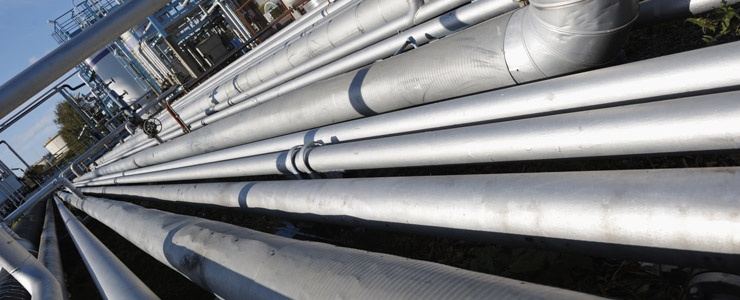
MONEL 400, a nickel-copper alloy, was one of the first high-nickel alloys introduced to industry in 1905. Today, over 100 years later, it is still widely used and will continue to be used due to its outstanding corrosion resistance in many industrial applications.
Since this first nickel alloy, however, the industry has moved fast, introducing more and more technically superior nickel alloys to the market. The flagship INCONEL range offers standard materials of use for some of the most extreme operating environments.
Nickel alloy properties include outstanding corrosion resistance and the ability to withstand exceptionally high temperatures. This makes them useful for a wide range of applications.
Additional alloying elements such as cobalt, molybdenum and tungsten provide solid solution strength. Aluminium and titanium give precipitation hardening, and chromium improves corrosion resistance. Small amounts of carbon, zirconium and boron are important for strength and ductility, while oxide dispersions can provide additional strength and single-crystal components can offer improved creep resistance.
With all these variables, the composition must be carefully balanced and processing tightly controlled. Remarkably, some of these materials can be stronger at very high operating temperatures than mild steel at room temperature. The latest materials continue to achieve still-higher operating temperatures as new elements are added through research and product development.
Key characteristics
Nickel alloys have attractive properties for material selection. They are very corrosion resistance, which means they can be employed in industries where there is highly corrosive media present. This includes things like high-strength acids, both oxidising and reducing gases, and sour gas. They are used in industries such as chemical and petrochemical processing, oil and gas extraction, and pollution control.
Another key characteristic of a nickel alloy is its resistance to high temperatures. This makes nickel alloys useful in the aerospace and automotive industries, where a loss of strength under pressure could have catastrophic results. They usually exhibit good rupture and creep strength, as well as resistance to stress-corrosion cracking and pitting.
Nickel alloys also present high electrical conductivity, which means that they are often used in communications and electronics.
Main applications
Corrotherm supplies a large range of nickel alloys. The table below shows the available Grades and the applications they can be used for:
| Nickel alloy | Some applications |
|---|---|
| INCONEL alloy 625 | Flue gas scrubbers, super-phosphoric acids, nuclear waste processing, down-hole equipment in sour gas production. Offshore and onshore piping systems. |
| INCONEL alloy 601 | Combustion can liners and containment rings in jet engines. Process heaters, condenser tubes in sour water, combuster components, thermal reactors and catalyst regenerators. |
| INCONEL alloy 600 | Thermal processing, chemical and food processing, nuclear steam generators and moderator coolers. |
| INCONEL alloy 718 | Liquid-fuelled rocket components. Rings, casings and formed parts for aircraft and land-based gas turbine engines. Cryogenic tankage. |
| INCONEL alloy X-750 | Rotor blades, wheels and bolts for gas turbines. Rocket0engine thrust chambers and large pressure vessels. |
| INCONEL alloy 725 | Hangers, landing nipples, side pocket mandrels and polished bore receptacles for sour-gas service. High-strength fasteners in marine applications. |
| INCONEL alloy 22 | Boiler tubes, waterwells and other components in coal-fired electric power generation boilers. |
| INCONEL alloy 690 | Tail-gas reheaters in nitric acid production, heating coils and and tanks for nitric/hydrofluoric solutions used in pickling of stainless steels and reprocessing of nuclear fuels. |
| INCONEL alloy 693 | Reformer tubes, thermowells, thermocouple sheathing, tube ferrules, baffle plates and valve components in synfuel and petrochemical processes. |
| INCONEL alloy C-276 | Power station flue gas desulphurisation components like ducts and fans, louvers and gas valves, dampers, scrubbers, chimney stack linings and containment housings. |
| INCONEL alloy 617 | Catalyst grids in nitric acid production, reformer tubes for steam generation in petrochemical plant and high temperature gas valve components. |
| INCOLOY alloy 825 | Nuclear waste reprocessing, chemical plant, sour gas oil and gas, pickling plants and concentrated caustic soda. |
| INCOLOY alloy 925 | Down-hole and surface gas-well components, marine and pump shafts or high-strength piping systems. |
| INCOLOY alloy 27-7MO | Feedwater and process fluid circuits in power plants and in pulp and paper mills, heat exchangers in marine and oil field extraction service and in chemical processing plant. |
| INCOLOY alloy 800/H | Steam generators and feed water heaters in nuclear power plants ammonia plants handling very high temperature fluids. |
| MONEL alloy 400 | Shipbuilding offshore and marine technology feed water heaters in fossil-fired power stations. |
| MONEL alloy K-500 | Sea water pumps, shafts and valve shafts and valve plate spring seals. Doctor blades for the separation of paper strip from rollers. |
| Nickel 200/201 | Used in food-processing. Chemical shipping drums, electrical and electronic parts, aerospace and missile components. |
Find out more about any of the Grades that Corrotherm stocks online or by contacting a member of our Sales team.
 Life of Nickel Alloys
Life of Nickel Alloys

